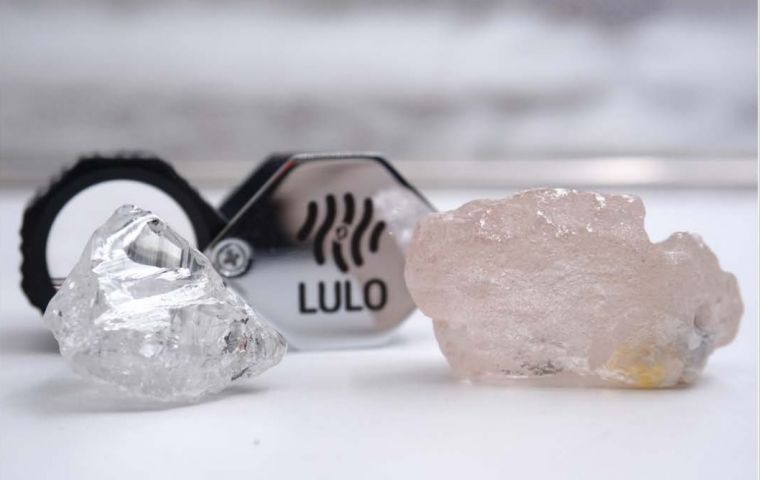MercoPress. South Atlantic News Agency
The largest pink diamond in 300 years, was mined in Angola, “Rose of Lulo”
 The “historic” discovery of this type IIa diamond, belongs to a category that includes particularly rare and pure stones
The “historic” discovery of this type IIa diamond, belongs to a category that includes particularly rare and pure stones Australia's Lupaca Diamond Company has reported that miners in Angola have extracted a rare pure pink diamond, considered the largest to have been discovered in the world in 300 years. The 170-carat, 34 grams diamond has been dubbed “the Rose of Lulo”, after the mine in northeast Angola where it was extracted.
The “historic” discovery of this type IIa diamond, a category that includes particularly rare and pure stones, was also welcomed by the Angolan government, a partner in the mine. The stone will be sold at an international auction, probably at an astronomical price.
Although the “Rose of Lulo” will still need to be cut and polished to achieve its full value — a process in which a stone can lose 50% of its weight — similar pink diamonds have fetched record prices in the past.
In 2017, the 59.6-carat “Pink Star” diamond was auctioned in Hong Kong at the astronomical price of US $71.2 million, and remains the diamond with the highest selling price in history.
Pink diamonds are graded, in terms of value, according to the four Cs — color, clarity, cut, and carat weight.
Lucapa hailed the finding of the stone as “historic.” And Angola's Mineral Resources minister Diamantino Azevedo said “This record and spectacular pink diamond recovered from Lulo continues to showcase Angola as an important player on the world stage,”
While most colored gemstones contain chemical impurities that absorb light, no such materials are found in natural pink diamonds. Instead, the color is thought to be due to “plastic deformation” that the stones undergo during formation.
According to geologists diamonds, formed deep in the Earth, are propelled to the surface amid seismic shocks. In the process they change electron structures within the crystal lattice, affecting the way that the stone refracts light.
Pink diamonds are usually associated with the Argyle mine in northwestern Australia, which produces an estimated 90% of the world's natural pink diamonds. However, they've also been found in Brazil, India, and Tanzania, as well as Angola.
The largest known pink diamond is the Daria-i-Noor (Sea of Light) diamond, which was mined in India, is part of the Iranian Crown Jewels collection of the Central Bank of Iran.




Top Comments
Disclaimer & comment rulesCommenting for this story is now closed.
If you have a Facebook account, become a fan and comment on our Facebook Page!